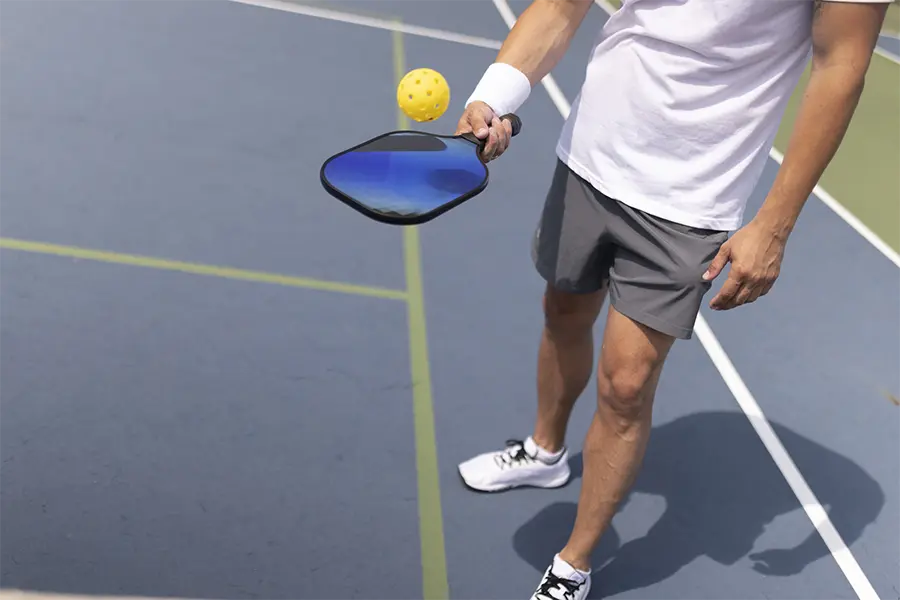
How to Avoid Pickleball Injuries: Sports Medicine Doctor Explains
Pickleball has become America’s fastest-growing sport, but with that explosive popularity comes an unfortunate side effect: injuries are popping up just as fast. Recently, VSI Sports Medicine expert Dr. Yash Mehta appeared on FOX 5 DC to share practical strategies that help players stay on the court longer, play safer, and most importantly, have more fun while protecting their bodies from common pickleball injuries.
Why Pickleball Players Get Hurt More Than They Expect
Many people assume pickleball is a gentle, low-impact sport that requires minimal preparation. The reality is quite different. As Dr. Mehta explains, “Pickleball is like a combination of tennis and table tennis. It’s a smaller court, but it’s not like table tennis where you can kind of just stand there. You have to move.”
The deceptive simplicity of pickleball leads many players to jump on the court without proper preparation. This “easy sport” mentality contributes significantly to injury rates, especially among weekend warriors and those returning to regular physical activity after extended breaks.
The Most Common Pickleball Injuries We Treat
Pickleball’s unique combination of quick footwork, reaching, lunging, and overhead motions creates a perfect storm for certain types of injuries. The sport demands lateral movements that many recreational athletes don’t regularly practice, putting stress on muscles and joints that aren’t properly conditioned for these movement patterns.
The most frequent issues Dr. Mehta and the VSI team encounter include:
- Low back strains and herniated discs
- Rotator cuff irritation and tears
- Lateral elbow tendinopathy often called tennis elbow or “pickleball elbow”
- Achilles tendon strains and ruptures
These injuries particularly affect the smaller stabilizing muscles that recreational athletes often neglect in their regular fitness routines. Without proper conditioning and warm-up protocols, these supporting muscles become vulnerable to strain and overuse.
Who’s Most at Risk for Pickleball Injuries
While anyone can get injured playing pickleball, certain groups face higher risks. Dr. Mehta notes that players who aren’t as active on a daily basis often underestimate the sport’s physical demands. “If we’re not as active, if we’re older, things that when our muscles are not used to being active and they’re not really finely tuned or used to being worked out, this is still a cardiac activity. It is a sport.”
Weekend players and those easing back into exercise are particularly susceptible to both overuse injuries and sudden strains. The enthusiasm to play combined with de-conditioned muscles creates a recipe for injury. Age also plays a factor, as older players may have reduced flexibility, slower reaction times, and muscles that take longer to warm up and recover.
Warm Up Like the Athlete You Are
The single most effective strategy for preventing pickleball injuries is treating the sport with the respect it deserves. This means approaching each session like any other athletic endeavor, beginning with a comprehensive warm-up routine.
Dr. Mehta recommends dedicating five to ten minutes to warming up, with longer periods for players who are newer to regular activity or returning from time off. “You want to warm up for about 5 to 10 minutes. And if you’re older or not as active, maybe warm up longer.”
Dynamic Movements for Pickleball Warm-Up
Your warm-up should address the specific movement patterns you’ll use during play:
- Gentle lateral shuffles to wake up side to side movement
- Walking lunges and hip openers for lower body mobility
- Arm circles and shoulder external rotation patterns to prime the rotator cuff
- Overhead reach and tall posture drills to prepare for serves and smashes
These dynamic movements help increase blood flow to working muscles, improve joint mobility, and activate the neuromuscular patterns you’ll rely on during play. Unlike static stretching, dynamic warm-ups better prepare your body for the explosive movements pickleball requires.
Choose Gear That Supports You
Proper equipment plays a crucial role in injury prevention. Dr. Mehta emphasizes the importance of court shoes with good traction, joking about his appearance on the show: “You can see today I’m not fashionable, but I’m wearing my shoes. Shoes are important. You want shoes that give you traction. It’s not something let me go wear my slides or my loafers and go play pickleball.”
Quality court shoes help you push off safely during lateral movements and provide the stability needed for quick directional changes. For players with a history of ankle problems, additional ankle support through braces or high-top shoes can provide extra protection.
Hydration is equally important but often overlooked. Start hydrating before you step onto the court and continue after your match. Proper hydration reduces cramping risk and supports faster recovery between sessions.
Play with Smart Pickleball Form
Good movement patterns protect your back throughout an entire match. The most critical technique adjustment involves how you handle low balls. Dr. Mehta demonstrates the proper approach: “If the ball’s coming to you and as we get older, if we’re on the backs of our feet and you’re bending over to pick up the ball or hit the ball, it’s hurting your back.”
Instead of rounding your lower back to reach low balls, bend through your hips and knees. This fundamental movement pattern change can prevent the repetitive stress that leads to back strains and disc problems.
Court positioning also plays a protective role. When play allows, work closer to the kitchen line (non-volley zone) so you’re striking balls in front of your body with less repetitive bending. This positioning not only improves your game strategically but also reduces the mechanical stress on your spine.
When to Seek Professional Care
Your body provides clear signals when something needs attention. Don’t ignore pain that lingers beyond a few days, especially if it’s accompanied by:
- Numbness or tingling extending into an arm or leg
- Sharp shoulder pain when lifting your arm
- Persistent elbow soreness with gripping activities
- A sudden “pop” sensation followed by calf pain
Early intervention often means faster recovery and a quicker return to the activities you love. Waiting too long can turn a minor issue into a major problem that sidelines you for months. Our team treats spine and sports related injuries with comprehensive, evidence guided care tailored to your goals. Schedule a consultation to keep your game on track.
About Dr. Yash Mehta
Dr. Yash Mehta is a double-board certified specialist in physical medicine and rehabilitation. He completed residency at Sinai Hospital of Baltimore and a fellowship in interventional spine and musculoskeletal medicine at Johns Hopkins Hospital. He cares for active individuals of all ages and speaks English, Gujarati, Hindi, and conversational Spanish. You may have seen his expertise featured on FOX 5 DC.
Topics covered
About the Author
Featured Resources
Insights to Achieve a Pain-Free Life



